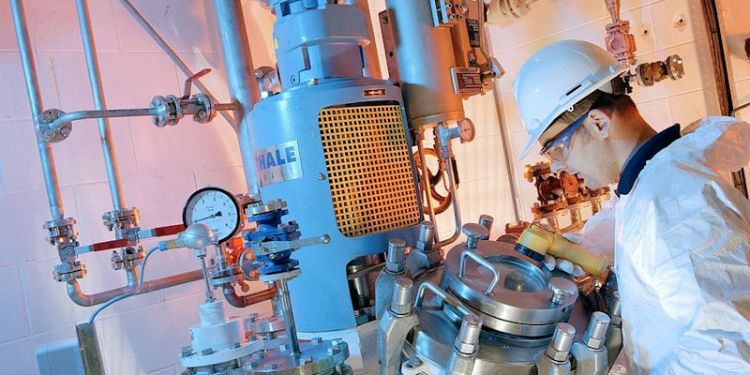Colloid, polymer and crystal engineering
Facilities

The following facilities support our research:
Synthetic capability
Our facilities include a laboratory dedicated to wet chemistry including small-molecule and polymer synthesis, emulsion preparation incorporating:
- Three standard fume cupboards
- One full height fume cupboard
- Nitrogen lines for synthesis under inert conditions
We also have access to the Insitute of Process Research and Development (iPRD) which is a 650 m2 state-of-the-art laboratory dedicated to process chemistry and scale-up.
Analytical capability
- Rheometer: TA Instruments DHR-II rheometer with double wall ring geometry and high pressure cell (138 bar). The instrument is used to measure the flow properties of suspensions, emulsions, foams, and polymeric gels, as well as the shear rheology at a planar liquid-liquid and liquid-gas interface
- Atomic force microscope (AFM): Bruker Bioscope II AFM providing nanoscale resolution imaging and force measurements in both aqueous and non-aqueous environments
- Gel Permeation Chromatography (GPC): Agilent 1260 Infinity II with Refractive Index and UV-vis detection. Capability for running samples in DMF, THF and Aqueous Eluents.
- Light Scattering/Particle Size measurements: Brookhaven Multi-angle instrument capable of both dynamic and static light scattering, Zetasizer Nano, Malvern Mastersizer 2000
- Pendant drop tensiometer: Biolin Scientific Theta tensiometer with thermal stage, pulsating drop module and automatic liquid dispenser. The instrument is used to measure droplet contact angle, interfacial tension and interfacial dilatational viscoelasticity
- Optical reflectometer: Technique used to study material adsorption on solid substrates. The adsorbed amount is expressed as a function of the intensity ratio, S, of parallel and perpendicular polarized light
- Quartz crystal microbalance with dissipation monitoring: Measures the mass change on piezo-sensors in-situ and in real time. The apparent adsorbed layer thickness can be determined through mathematical conversion of the frequency and dissipation shifts.
- Optical Microscopy
We also have access to small research facilities within the university including the Leeds Electron Microscopy and Spectroscopy Centre (LEMAS) and the Nuclear magnetic resonance (NMR) facility.

